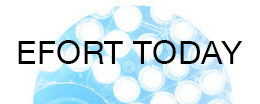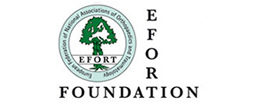VIENNA (jp) – EFORT President Prof. Karl-Göran Thorngren explains the attractions of the 10th EFORT Congress in Vienna.
The 10th EFORT Congress will definitely be an occasion to celebrate. Can you tell us some of the special events we can look forward to? Will there be an opportunity to look back on past years and Congresses?
Thorngren: We are celebrating our 10th Congress in Vienna, in a city of culture. This will be audible throughout the Congress as there will be an element of music in all social events. And we will have an exhibition with photographs and information about the history of EFORT. We are confident that this will be a great attraction.
When you look back on past years and past EFORT Congresses, what have been the highlights since our FOUNDATION in 1991?
Thorngren: Our main activities have always been the major Congresses. So when you look back over the years you remember, for example, Lisbon, Helsinki, Florence and recently Nice. We have had an increasing number of attendees. And now we are expecting more than 8,000 people in Vienna.
To attract attendees, EFORT places a strong emphasis on new and exciting formats such as the controversial case discussions. What do you think makes these sessions especially attractive?
Thorngren: We are continuing and expanding our sessions with controversial case discussions. It is always stimulating both for the audience and the lecturer to have x-rays or a case study linked to a specific patient and to try to cope with the challenge together. Usually these controversial cases are shown as a series of events: One primary procedure is done, a complication appears, and then there are further procedures – it is often an extensive history. The specific linkage to a real case makes it stimulating. And it is always a source of interaction between the audience and the lecturer. In some sessions we also have a pro and con debate where different ideas are put up against each other. In the end the audience can vote which way of treatment is most promising.
The Experts-Meet-Experts sessions were a great success in Nice. There will be even more of these ExMEx sessions in Vienna? Has the concept of these interactive sessions been developed further since the EFORT Congress in Nice?
Thorngren: We have six subjects:
– ACL reconstruction: From basics to controversies
– The lumbar spine: Fixation or fusion or prosthetics
– Osteotomies around the knee
– Paediatric diaphyseal fractures: Plaster, external fixation, plating or pinning?
– Osteoporosis: Fragility fractures
– Total hip arthroplasty: The ideal bearing surface
An ExMEx session is a whole day dedicated to a specific topic. As the number of participants is limited to 100 per session, we also have a special registration for these sessions. This limitation is necessary to make the sessions more personal. As it was in Nice, the concept is based on a mixture of lectures and some practical parts, as hands on-presentations or specific x-ray case presentations. It is intended to be an interactive course at a very high level, as the name “Experts Meet Experts” indicates.
In addition to new and exciting formats, Congress attendees will also find familiar sessions such as the three-minute paper presentation. What is the strong point of these presentations?
Thorngren: The short paper presentations make it possible to include more oral presentations. The extension of the instructional lectures and the symposia, which are much appreciated by attendees, has led to a lower number of free papers. The short time now allows us to include more papers. For the EFORT Congress in Vienna we received 3478 abstracts. We accepted 19.5 percent as free papers, 59 percent as e-posters and we had a rejection rate of 21.5 percent. The number of abstracts shows that there is a great interest among orthopaedic surgeons and trauma surgeons all over Europe in presenting their scientific achievements at the EFORT Congress. The high number of abstracts was also a reason why we started to organise yearly Congresses, beginning with Nice in 2008. Next year we will have a meeting in Madrid together with the Spanish Orthopaedic Association, and in 2011 we will meet inCopenhagen.
EFORT is offering the comprehensive review course for the first time. Is this to be understood as “orthopaedics in a nutshell”? Who would you recommend enrol for this course?
Thorngren: That’s a correct description. It’s a preparatory course for junior specialists who want to take the EBOT exam. This is a European exam which was developed by the UEMS (Union of Medical Specialists). EFORT is supporting this exam. We cooperate with UEMS in organising the exam, and we are offering this comprehensive review course for the first time. But it can also be seen as a refresher course for more experienced colleagues. It is a review of important aspects of our overall expertise.
Last but not least, there will be almost 60 symposia and instructional lectures – will it not be difficult to navigate in this ocean of knowledge?
Thorngren: For several years already we have tried to keep to certain tracks linked to a subject. This means if an attendee is specialised in hip surgery, for example, he will find the events linked to his subject in one room following one after another. Of course if you have several interests you might be frustrated because you have to make choices. We have tried to reduce the number of parallel tracks. In Florence we had twelve full tracks and up to 16 parallel events at the same time. In Nice we had eight, now we are aiming for ten parallel tracks.
The EFORT FOUNDATION will get underway soon. What are its aims?
Thorngren: We will launch the EFORT FOUNDATION in Vienna. It will give all orthopaedic and trauma surgeons inEurope the opportunity to apply for grants for research and training. This includes grants for research projects, longer visiting fellowships as well as shorter congress visits. This is our vision for the future.


